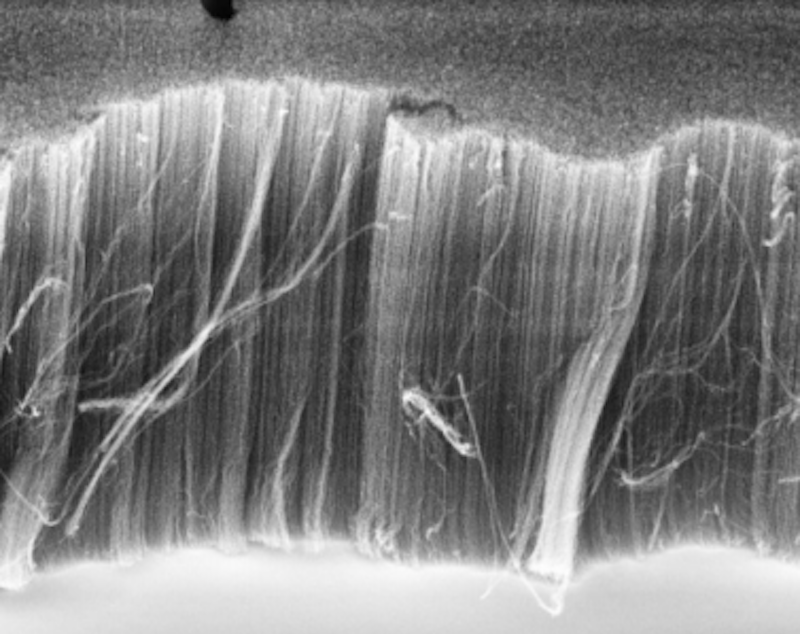Directional WIMP detection with carbon nanotubes
Large arrays of aligned carbon nanotubes (CNTs), open at one end, could be used as target material for the directional detection of weakly interacting dark matter particles (WIMPs).
As a result of a WIMP elastic scattering on a CNT, a carbon ion might be injected in the body of the array and propagate through multiple collisions within the lattice.
 The ion may eventually emerge from the surface with open end CNTs, provided that its longitudinal momentum is large enough to compensate energy losses and its transverse
The ion may eventually emerge from the surface with open end CNTs, provided that its longitudinal momentum is large enough to compensate energy losses and its transverse
momentum approaches the channeling conditions in a single CNT. A proper choice of the angle formed between the WIMP wind apparent orientation and the direction of parallel CNTs would therefore provide the capability to identify this WIMP wind direction. The results of calculations and simulations for an array of aligned CNT and derive some constraints on the CNT target efficiency have been reported here [1,2]. The DCaNT project that is aiming to experimentally demonstrate and measure the actual CNT target efficiency to channel ions. The sensitivity for an ideal detector in a region of low mass WIMPs (about 11 GeV) are estimated.

As a result of a WIMP elastic scattering on a CNT, a carbon ion might be injected in the body of the array and propagate through multiple collisions within the lattice.
 The ion may eventually emerge from the surface with open end CNTs, provided that its longitudinal momentum is large enough to compensate energy losses and its transverse
The ion may eventually emerge from the surface with open end CNTs, provided that its longitudinal momentum is large enough to compensate energy losses and its transverse momentum approaches the channeling conditions in a single CNT. A proper choice of the angle formed between the WIMP wind apparent orientation and the direction of parallel CNTs would therefore provide the capability to identify this WIMP wind direction. The results of calculations and simulations for an array of aligned CNT and derive some constraints on the CNT target efficiency have been reported here [1,2]. The DCaNT project that is aiming to experimentally demonstrate and measure the actual CNT target efficiency to channel ions. The sensitivity for an ideal detector in a region of low mass WIMPs (about 11 GeV) are estimated.
- L.M. Capparelli, G. Cavoto, D. Mazzilli, A.D. Polosa, Carbon Nanotubes Potentialities in Directional Dark Matter Searches (published version), ref: Physics of the Dark Universe, Vol. 9–10 (2015) 24
- G. Cavoto, E.N.M. Cirillo, F. Cocina, J. Ferretti, A.D. Polosa, WIMP detection and slow ion dynamics in carbon nanotube arrays, ref: Eur.Phys.J. C76 (2016) no.6, 349
